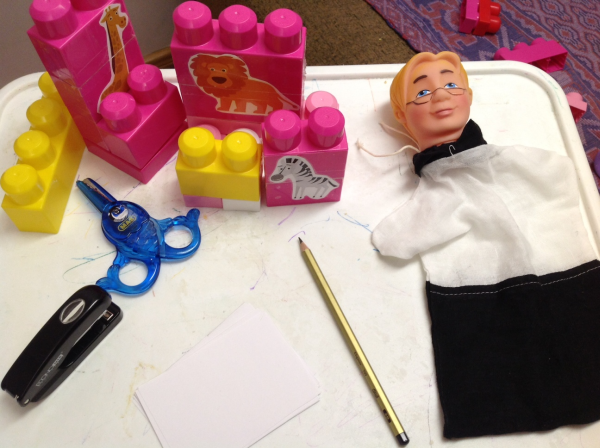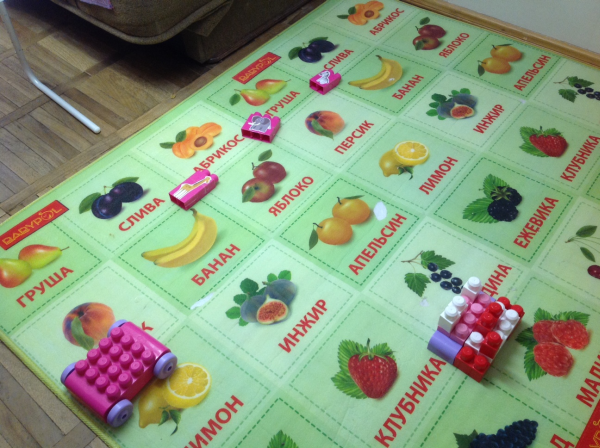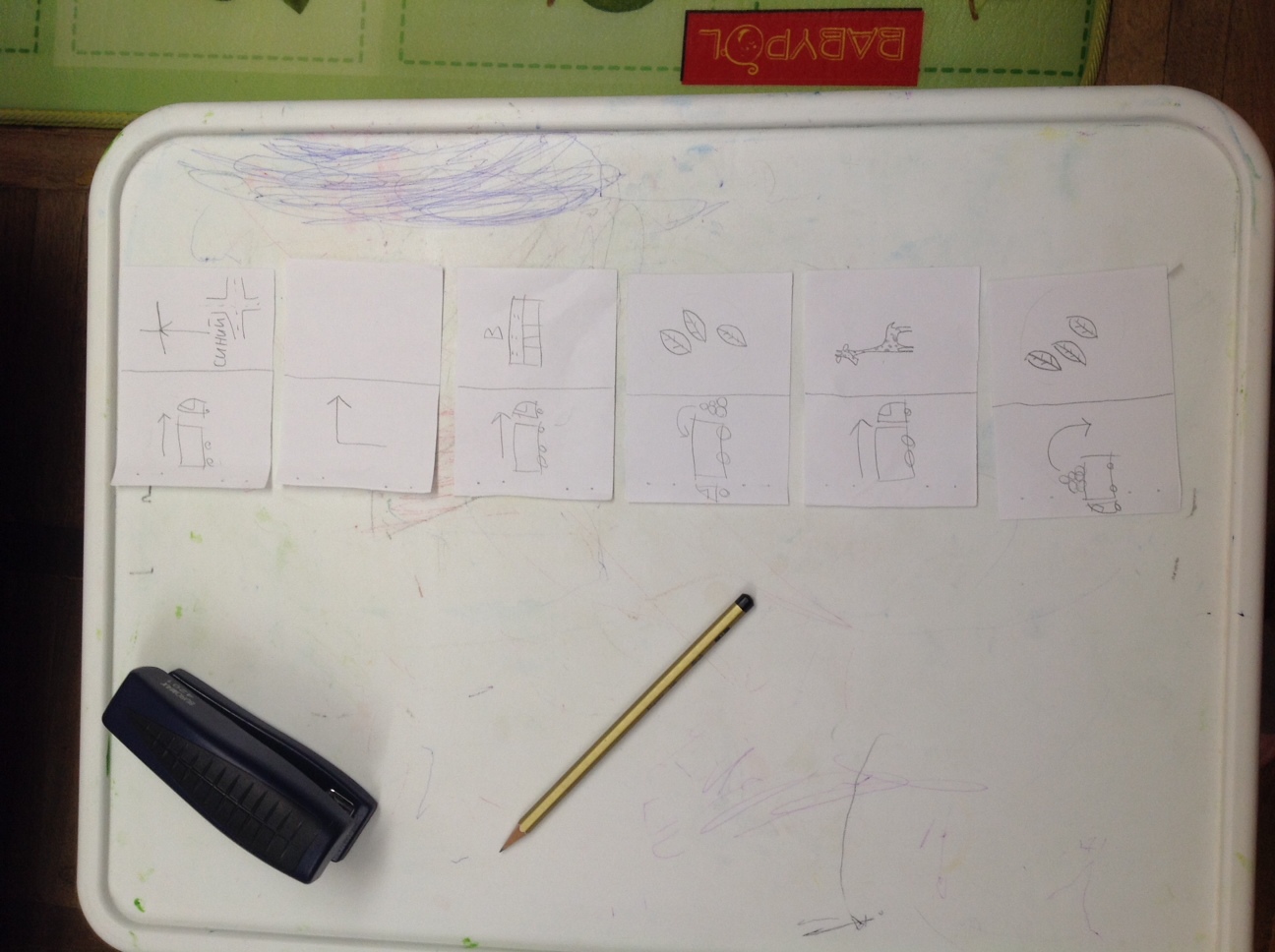MegaBloks programming

Working with children, you understand that programming, design and other STEM can be safely started from 3 years. No equipment is needed for this - children's imagination will replace any super-hyper-interactive device. The main thing is the desire of parents to work with the child.
I'll tell you about how we played programmers, what we used and what results we achieved.
So, materials:
')
- MegaBloks constructor (LEGO type)
- animal stickers (printed on the printer, glued with adhesive tape).
- paper, pencils, scissors, stapler.
- a doll with a rubber head "programmer" (this is how it was sold in the store).
Game mechanic:
Animals order the delivery of goods to the house - the programmer writes the code for the robot courier, who goes to the store, loads the necessary and delivers to the address. According to the principle, "my phone rang."
Viewers help the programmer to write code.


What the code looks like: small format leaves are divided into two halves - the function on the left, the parameters on the right.
Sheets are stapled and a book is obtained. The little book is transferred to the robot that reads it and performs the steps. The role of the robot, of course, performs an adult.

The child instantly became involved. Even deeper insight than I expected.
While planning the game, I hesitated whether to route the route to the store with all the turns. I decided that for the first time it was too early and it was enough just to give the command “go [store]”. However, almost immediately the robot “arrived at the wrong place” and the programmer had to paint turns (forward to the blue intersection, turn right, go straight). We took out this “route” to a separate booklet, which we then used as a function from the library (when I suggested this, the child paused to think but agreed).

Having received their order, the animals gladly ate everything.
We worked several scenarios with herbivores and predators, but when the zebra daddy called and ordered the pills, the whole game switched to a hospital theme, which spontaneously supplanted robotics.
Conclusions and plans:
The little book on the stapler works great as an algorithm, and allows you to transfer pieces of code, collecting new books from already prepared parts.
Next time, I am going to fix the coding of the route and try to switch to a system with addresses - break the field into squares according to the matrix. It will not be a wheeled robot, but a helicopter.
I assume that the book is also suitable for working with cycles, “if, then” operators and variables.
Obviously, the key point of the lesson is the scenario of the story, which is played out along the way. For a child, this is a driver of motivation and the help of a parent is required here, more than with an explanation of technical subtleties.
Next experiment : Recall everything - neuroprogramming for preschoolers
Source: https://habr.com/ru/post/207548/
All Articles